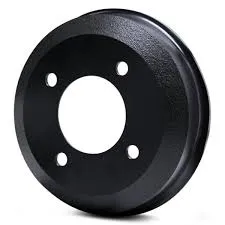When Should You Consider Replacing Your Drum Brakes for Optimal Performance
Do You Need to Replace Drum Brakes? A Comprehensive Guide
Drum brakes are a vital component of many vehicles, and while they are known for their durability and effectiveness, they do require periodic maintenance and eventual replacement. If you’re unsure whether it's time to replace your drum brakes, this article will guide you through the signs of wear, the replacement process, and key maintenance tips.
Understanding Drum Brakes
Before we dive into replacement signs and processes, let’s understand what drum brakes are. They consist of a drum, which is a circular metal housing that rotates with the wheel, and brake shoes that press against the inner surface of the drum to create friction and slow down the vehicle. While drum brakes are commonly used on the rear wheels of many vehicles, they can also be found on some front-wheel-drive models.
Signs You Need to Replace Drum Brakes
1. Noise While Braking If you hear grinding, squealing, or scraping noises when you apply the brakes, this could indicate that your brake shoes are worn out or that there’s debris lodged in the drum. While some noise is normal, persistent sounds can signify that it’s time for a replacement.
2. Vibration or Pulsation When you apply the brakes, if you feel the pedal vibrating or pulsating, it may suggest that the drum is warped or that the shoes are unevenly worn. This issue can affect the overall braking performance of your vehicle.
3. Longer Stopping Distances If you notice that your car takes longer to stop than it used to, it could be due to worn drum brakes. This can significantly impact your safety, especially in emergency stopping situations.
4. Brake Warning Light Many modern vehicles have a dashboard warning light that indicates brake issues. If this light illuminates, it’s important to investigate the matter further.
5. Visual Inspection Regularly inspecting your drum brakes can help you catch wear and tear early. Look for cracks, rust, or significant wear on the brake shoes. If the brake lining appears to have worn down to a thinning level, replacement is necessary.
The Replacement Process
Replacing drum brakes is typically a task for professionals, but knowing the general process can help you understand what to expect.
1. Preparation The car is lifted, and the wheel is removed to expose the drum brake assembly.
do you need to replace drum brakes

2. Removal of the Drum The drum is taken off, allowing access to the brake shoes and other components.
3. Inspection All components, such as the brake springs and adjuster, are inspected for wear. If they appear damaged, they should be replaced as well.
4. Replacing Brake Shoes New brake shoes are installed. The surface of the brake drum is cleaned, and any necessary resurfacing is performed to ensure a smooth contact surface.
5. Reassembly and Adjustments After installation, the assembly is reattached, and adjustments are made to ensure proper spacing and function.
6. Testing Finally, a test drive is conducted to ensure that the braking system is functioning correctly.
Maintenance Tips
To prolong the life of your drum brakes and enhance vehicle safety, consider the following maintenance tips
- Regular Inspections Check your brakes regularly, especially if you frequently drive in heavy traffic or on hilly terrain.
- Avoid Overloading Carrying excessive weight can wear out your brakes faster. Always adhere to your vehicle's weight limits.
- Brake Fluid Checks Keep an eye on your brake fluid level and quality, as this can impact brake performance.
- Listen and Feel Be aware of any changes in the braking feel or sounds while driving, as these could indicate potential issues.
Conclusion
While drum brakes are designed for durability, they do not last indefinitely. By being vigilant about signs of wear and understanding the replacement process, you can maintain the safety and efficiency of your vehicle. If you notice any of the warning signs discussed, consult a professional to assess the condition of your brakes and determine if it’s time for a replacement. Regular maintenance and timely replacements will ensure that your braking system remains in top-notch condition, keeping you and your passengers safe on the road.
-
The Power and Reliability of Brake DrumsNeiegkeetenAug.27,2025
-
The High-Quality Truck Brake DrumsNeiegkeetenAug.27,2025
-
Quality Brake Drums for Reliable PerformanceNeiegkeetenAug.27,2025
-
Get the Quality Semi Trailer Brake Drums for Your FleetNeiegkeetenAug.27,2025
-
Everything You Need to Know About Brake DrumsNeiegkeetenAug.27,2025
-
Enhance Your Vehicle's Performance with Reliable Brake DrumsNeiegkeetenAug.27,2025
-
Truck Drum Brake Spring Replacement ProcedureNeiegkeetenAug.22,2025


